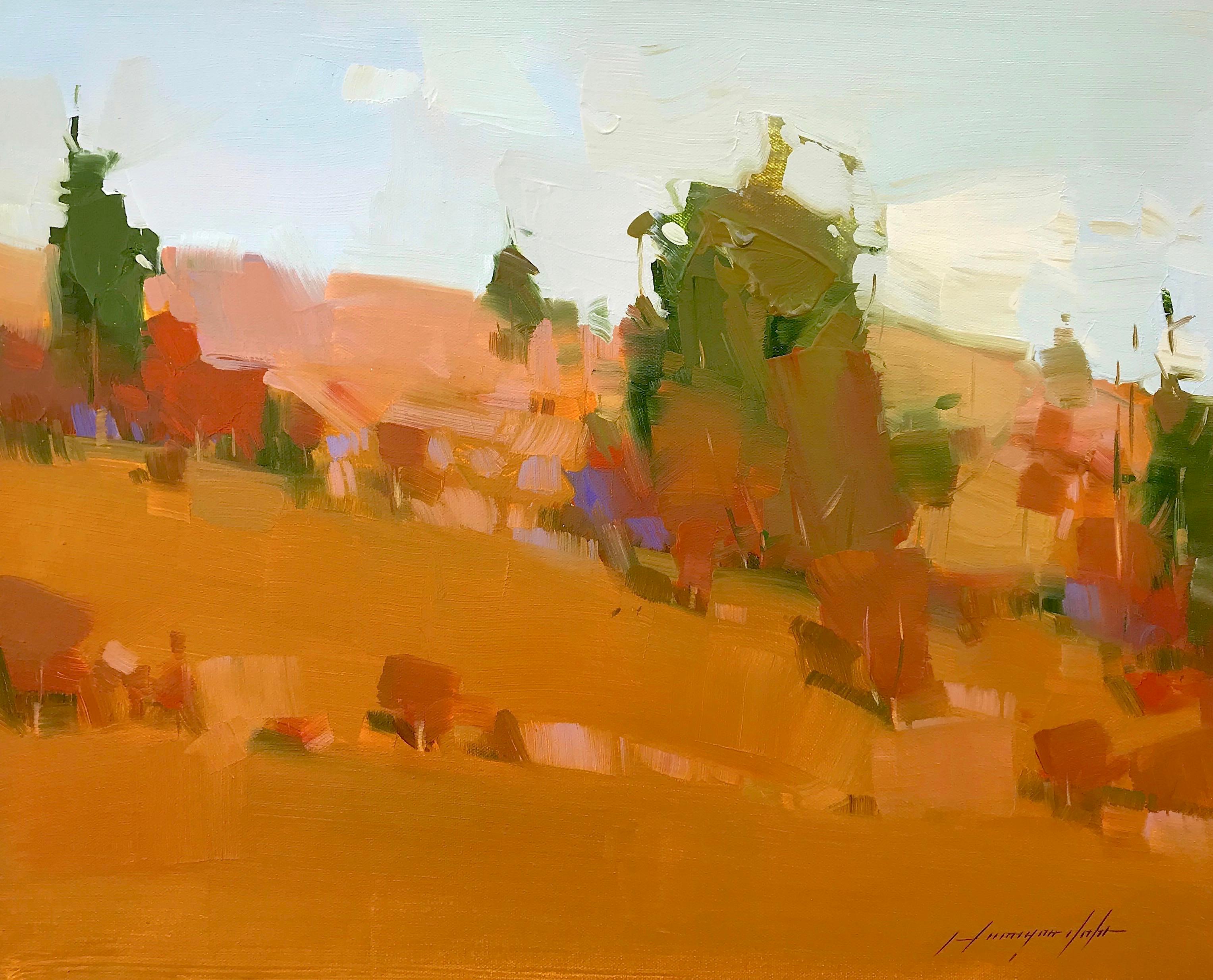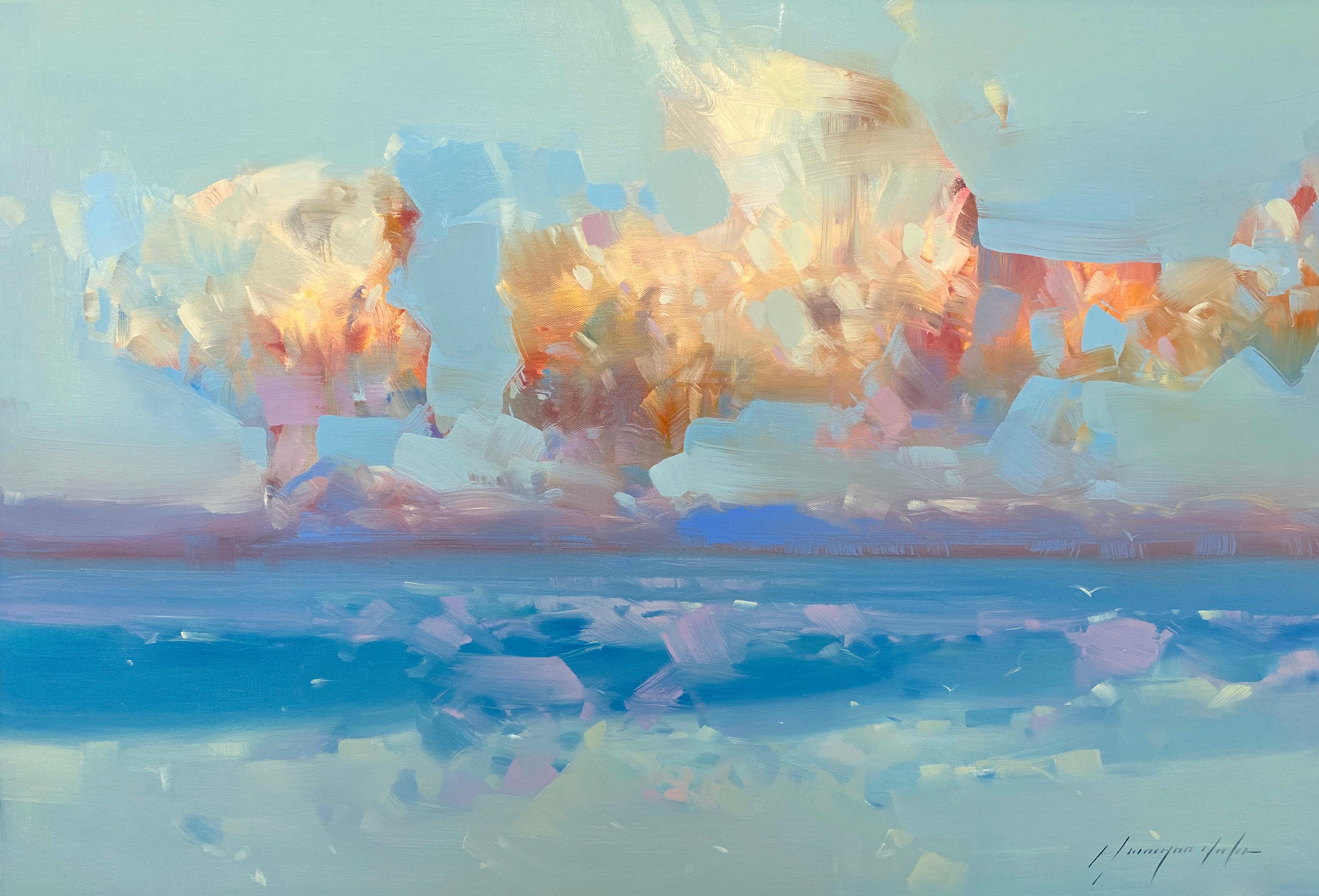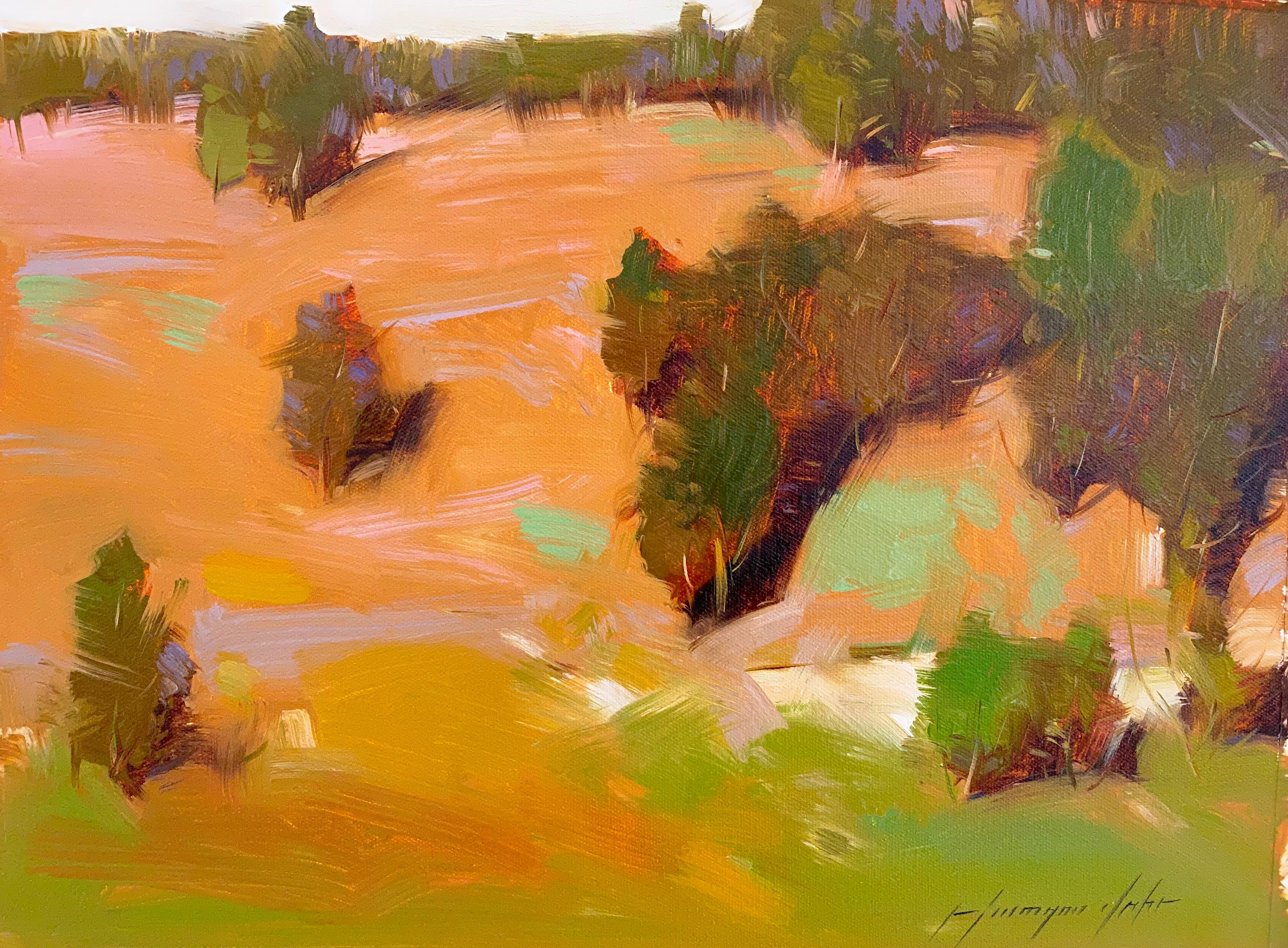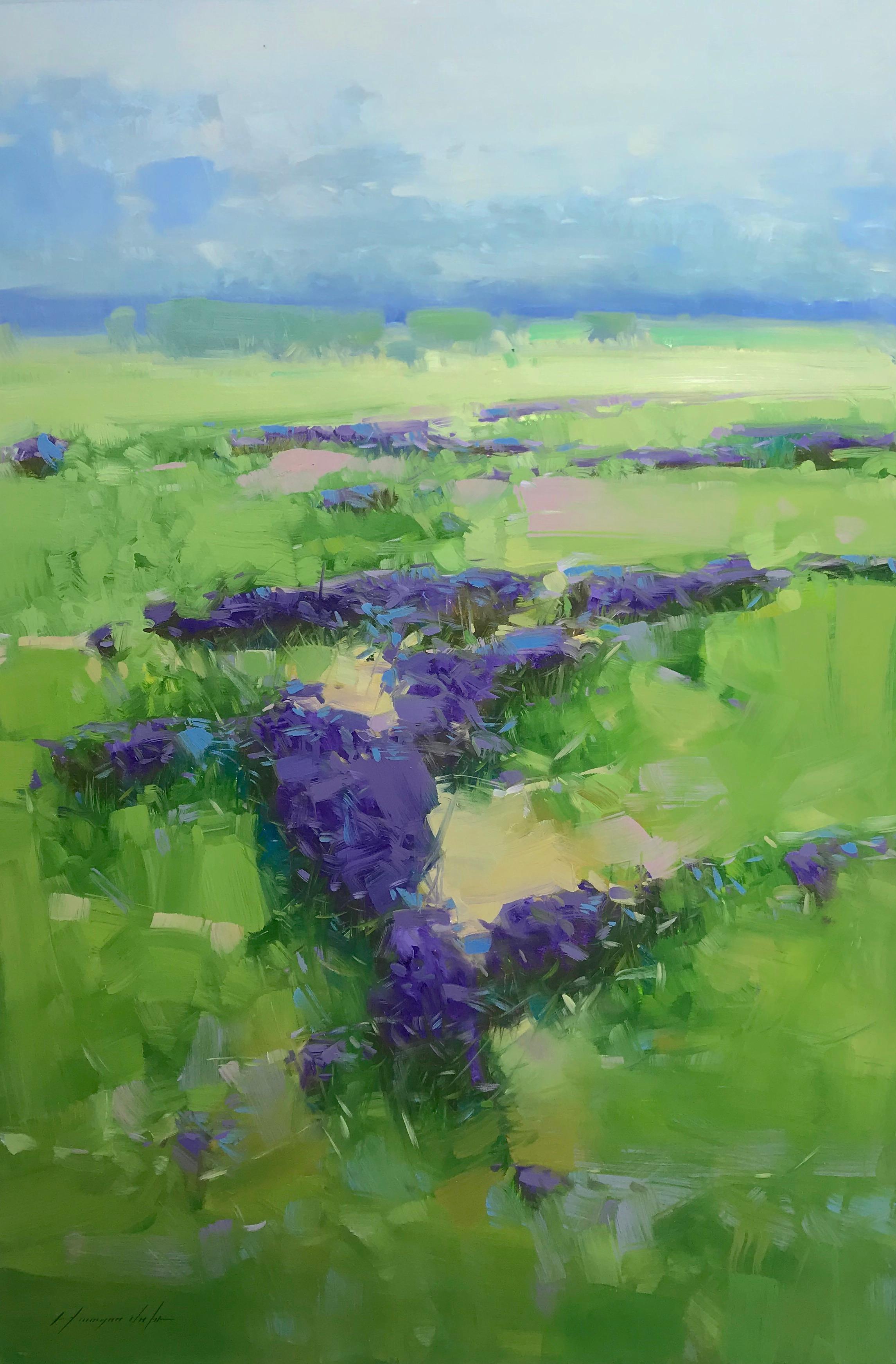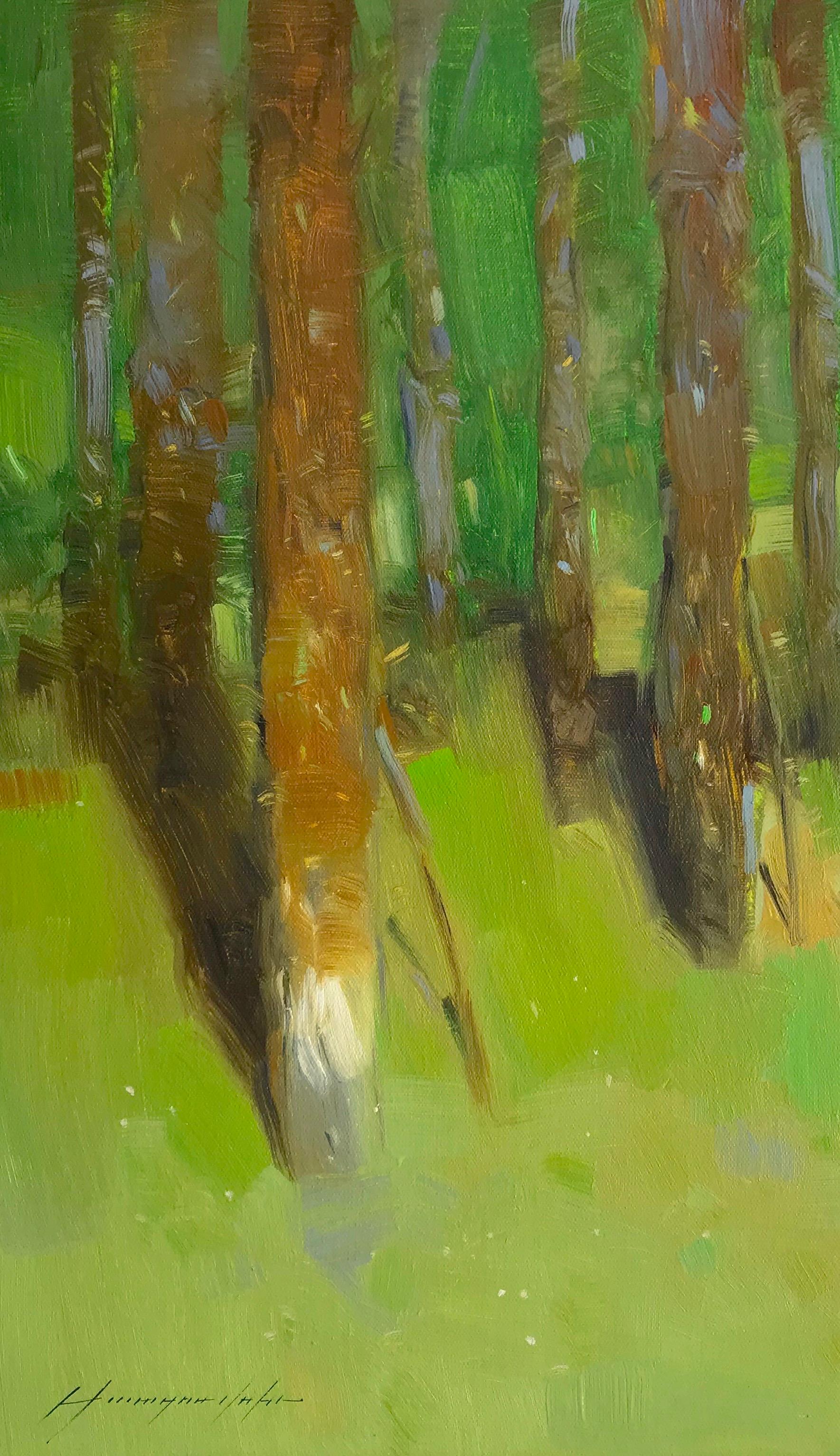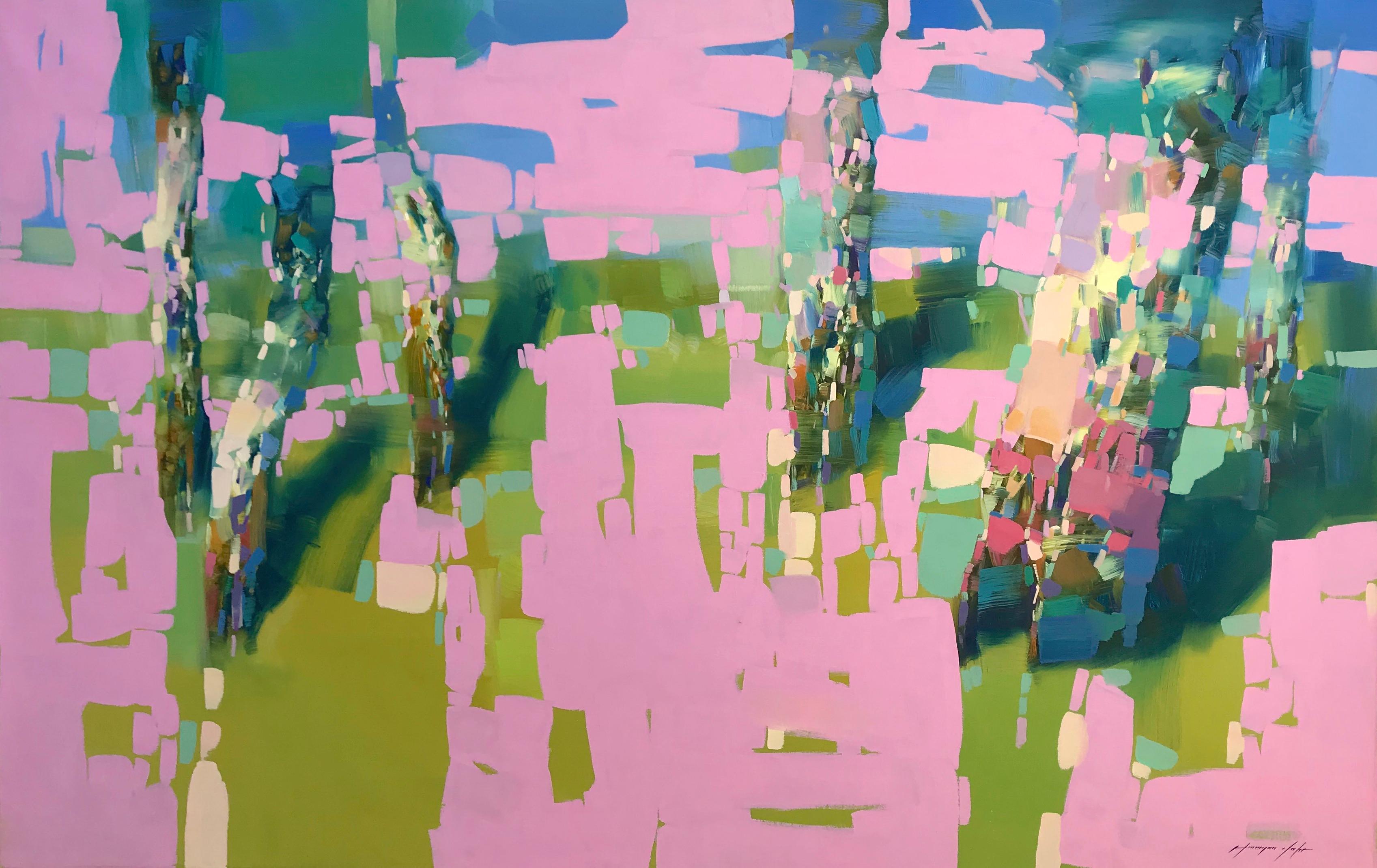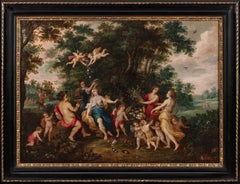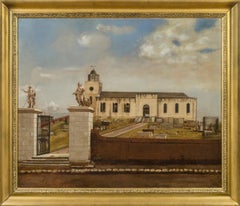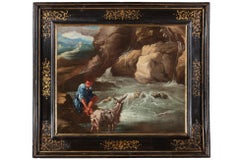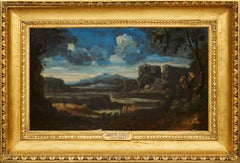Coastal View Landscape Saeys Paint Oil on canvas Old master 17th/18th Century
View Similar Items
Want more images or videos?
Request additional images or videos from the seller
1 of 23
Auction endedBrowse Current Auctions
Coastal View Landscape Saeys Paint Oil on canvas Old master 17th/18th Century1680-1740
1680-1740
About the Item
- Creation Year:1680-1740
- Dimensions:Height: 29.53 in (75 cm)Width: 40.95 in (104 cm)
- Medium:
- Movement & Style:
- Circle Of:Jacob Ferdinand Saeys (Antwerp 1658 - Vienna 1726) (1658 - 1726, Flemish, Belgian)
- Period:Late 17th Century
- Condition:
- Gallery Location:Riva del Garda, IT
- Reference Number:1stDibs: LU98819422322
About the Seller
4.9
Platinum Seller
Premium sellers with a 4.7+ rating and 24-hour response times
Established in 2017
1stDibs seller since 2018
239 sales on 1stDibs
Authenticity Guarantee
In the unlikely event there’s an issue with an item’s authenticity, contact us within 1 year for a full refund. DetailsMoney-Back Guarantee
If your item is not as described, is damaged in transit, or does not arrive, contact us within 7 days for a full refund. Details24-Hour Cancellation
You have a 24-hour grace period in which to reconsider your purchase, with no questions asked.Vetted Professional Sellers
Our world-class sellers must adhere to strict standards for service and quality, maintaining the integrity of our listings.Price-Match Guarantee
If you find that a seller listed the same item for a lower price elsewhere, we’ll match it.Trusted Global Delivery
Our best-in-class carrier network provides specialized shipping options worldwide, including custom delivery.More From This Seller
View AllCarnival Rome Colonna square Cerquozzi 17th Century Paint Oil on canvas Italy
Located in Riva del Garda, IT
Carnival in Rome in Piazza Colonna
Roman school of bamboccianti (mid-17th century) - workshop of Michelangelo Cerquozzi (Rome 1602 - Rome 1660)
Oil on canvas
74 x 96 cm. - Framed 88...
Category
17th Century Old Masters Paintings
Materials
Oil
$10,263 Sale Price
20% Off
Carnival Rome Navona square Cerquozzi 17th Century Paint Oil on canvas Italy
Located in Riva del Garda, IT
Carnival scene in 17th-century Rome (in Piazza Navona)
Michelangelo Cerquozzi (Rome 1602 – Rome 1660) workshop
Roman school of bamboccianti (mid-17th century)
Oil on canvas
74 x 96...
Category
17th Century Old Masters Paintings
Materials
Oil
$10,263 Sale Price
20% Off
Triumph Trinity Christ De Matteis Paint 17/18th Century Oil on canvas Old master
Located in Riva del Garda, IT
Paolo De Matteis (Piano del Cilento, 1662 - Naples, 1728)
attributed/ workshop
Triumph of the Trinity with Our Lady, Saint Joseph, Saint John the Baptist, Saint Ignatius, Saint Fran...
Category
17th Century Old Masters Paintings
Materials
Oil
$6,563 Sale Price
20% Off
Adoration Shepherds Spranger 16/17th Century Paint Oil on canvas Old master
Located in Riva del Garda, IT
Bartholomäus Spranger (Antwerp, 1546 - Prague, 1611) Workshop/circle of
Adoration of the Shepherds
Oil on canvas
114 x 90 cm.
Framed 126 x 101 cm.
The proposed painting, illustrati...
Category
16th Century Old Masters Paintings
Materials
Oil
$6,922 Sale Price
20% Off
Announcement Waben Signed Dated 1620 17th Century Oil on table Flemish Paint
Located in Riva del Garda, IT
Jacques Waben
(Alkmaar ca. 1575-1641/1642 Hoorn)
Signed in the bottom centre and dated ‘J. Waben f./1620’.
The Announcement to the Shepherds
Oil on oak panel
103 x 63 cm
in frame 107 x 67
Provenance: Vienna Palais Dorotheum Old master painting 10.12.2015 (lot 143)
This is a spectacular depiction of the theme of the annunciation to the shepherds, set in a nocturnal atmosphere dense with photos but refined, the episode of the birth of Jesus reported in the Gospel according to Luke (Lu 2:8-15), in which an angel announces the birth of Christ to a group of shepherds.
We see the scene just as described in the Gospel passage that sets the event at night where the shepherds, intent on watching over their flock, were startled by the sudden appearance of an angel of astonishing beauty who we see here radiating a powerful golden light, while at his side a multitude of other angels from the heavenly army sing praises to God.
After exhorting them not to be afraid, he informed them that a saviour, the Messiah, had been born in Bethlehem, whom they would find wrapped in swaddling clothes in a manger, cared for by the Virgin and St Joseph.
The annunciation to the shepherds was the most depicted night scene in Flemish painting from the 15th century...
Category
17th Century Old Masters Paintings
Materials
Oil
$13,724 Sale Price
20% Off
Architectural Capriccio Landscape Roma Fabris 18th Century Table Oil on canvas
Located in Riva del Garda, IT
Jacob Fabris (Venice, 1689 - 1761)
Architectural Capriccio with ancient classical ruins
Oil on canvas
cm. 56 x 112
with frame cm. 77 x 130
Expertise of Prof. Emilio Negro (Bologna)
...
Category
18th Century Old Masters Paintings
Materials
Oil
$14,918 Sale Price
20% Off
You May Also Like
Allegory of Abundance
Located in New York, NY
Painted in collaboration with Hendrick van Balen (Antwerp, 1575 – 1632).
Provenance: Private Collection, Uruguay, since the 1930s.
The eldest son of Jan Br...
Category
17th Century Old Masters Paintings
Materials
Copper
View of St. John’s Cathedral, Antigua
Located in New York, NY
Provenance:
Robert Hollberton, Antigua, ca. 1841
Private Collection, New York
The present painting depicts Old St. John’s Cathedral on the island of Antigua. The church was erected in the 1720s on the designs of the architect Robert Cullen. It measured 130 feet by 50 feet with north and south porches 23 x 20 ½ feet. The tower, 50 feet high with its cupola, was added in 1789. The church was elevated to the status of a cathedral, but disaster struck in the form of an earthquake that destroyed the building on 8 February 1843. A memorandum of that date relates the event:
“On Wednesday, 8th February, 1843, this island was visited by a most terrific and destructive earthquake. At twenty minutes before eleven o’clock in the forenoon, while the bell was ringing for prayers, and the venerable Robert Holberton was in the vestry-room, awaiting the arrival of persons to have their marriage solemnized, before the commencement of the morning service, the whole edifice, from one end to the other, was suddenly and violently agitated. Every one within the church, after the first shock, was compelled to escape for his life. The tower was rent from the top to the bottom; the north dial of the clock precipitated to the ground with a dreadful crash; the east parapet wall of the tower thrown upon the roof of the church; almost the whole of the north-west wall by the north gallery fell out in a mass; the north-east wall was protruded beyond the perpendicular; the altar-piece, the public monument erected to the memory of lord Lavington, and the private monuments, hearing the names of Kelsick, Warner, Otley, and Atkinson, fell down piecemeal inside; a large portion of the top of the east wall fell, and the whole of the south-east wall was precipitated into the churchyard, carrying along with it two of the cast-iron windows, while the other six remained projecting from the walls in which they had been originally inserted; a large pile of heavy cut stones and masses of brick fell down at the south and at the north doors; seven of the large frontpipes of the organ were thrown out by the violence of the shock, and many of the metal and wooden pipes within displaced; the massive basin of the font was tossed from the pedestal on which it rested, and pitched upon the pavement beneath uninjured. Thus, within the space of three minutes, this church was reduced to a pile of crumbling ruins; the walls that were left standing being rent in every part, the main roof only remaining sound, being supported by the hard wood pillars.”
The entrance from the southern side into the cathedral, which was erected in 1789, included two imposing statues, one of Saint John the Divine and the other of Saint John the Baptist in flowing robes. It is said that these statues were confiscated by the British Navy from the French ship HMS Temple in Martinique waters in 1756 during the Seven Years’ War and moved to the church. The statues are still in situ and can be seen today, much as they appeared in Bisbee’s painting, but with the new cathedral in the background (Fig. 1).
Little is known of the career of Ezra Bisbee. He was born in Sag Harbor, New York in 1808 and appears to have had a career as a political cartoonist and a printmaker. His handsome Portrait of President Andrew Jackson is dated 1833, and several political lithographs...
Category
19th Century Old Masters Landscape Paintings
Materials
Canvas, Oil
18th Century by Giuseppe Pianca Shepherd with Goat and River Oil on Canvas
Located in Milano, Lombardia
Giuseppe Antonio Pianca (Agnona di Borgosesia, Italy, 1703 - Milan, Italy, 1762)
Title: Shepherd with Goat and River
Medium: Oil on canvas
Dimensions: without frame 49 x 57 cm - wit...
Category
18th Century Old Masters Landscape Paintings
Materials
Canvas, Cotton Canvas, Oil
Italian Landscape with Jack Players, a painting by Gaspard Dughet (1615 - 1675)
By Gaspard Dughet
Located in PARIS, FR
Here Gaspard Dughet offers us an idyllic vision of the Roman countryside. The stages follow one another in a perfectly structured composition, revealing here a lake, there travellers walking along, gradually leading our eye to the blue horizon. But behind its classical composition, this landscape is particularly interesting because of three anthropomorphic details that the artist has hidden, opening the way to a radically different interpretation...
1. Gaspard Dughet, a landscape artist in the light of Poussin
Gaspard Dughet was born on June 4th, 1615 in Rome where his father, of French origin, was a pastry cook. He was probably named Gaspard in honour of his godfather Baron Gaspard de Morant, who was, or may have been, his father's employer. His older sister Jeanne married the painter Nicolas Poussin (1594 - 1655) on September 1st, 1630. The young Gaspard was apprenticed with his brother-in-law at the beginning of 1631, which led his entourage to name him Gaspard Poussin. The first preserved works of the painter date from the years 1633-1634 and were painted in Poussin’s studio.
Around 1635, Gaspard Dughet became emancipated and began to frequent the Bamboccianti circle. In 1636, he became friends with the painter Jean Miel (1599 - 1656), but also with Pier Francesco Mola (1612 - 1666) and Pietro da Cortona (1596 - 1669).
This was also the time of his first trips throughout Italy. The painter, although of French origin, appears never to have visited France. In 1646 he settled permanently in Rome. A recognized painter with a solid book of orders, he remained faithful to landscape painting throughout his life, alternating between cabinet paintings and large decorative commissions, using both oil and fresco.
Nailed to his bed by rheumatic fever at the age of 58, he died on May 25, 1675.
2. Discovering an idealized landscape
Beyond a relatively dark foreground that takes us into the landscape, we discover a vast bluish horizon: a plateau surrounded by deep ravines advances to the right, overhanging an expanse of water that sparkles below. A road winds through a mountainous mass as if leading us to the fortress that crowns it; another town appears in the distance at the foot of three conical mountains.
The composition is rigorous, mineral, and structured by geometric volumes. The various stages in the landscape lead one to the next attracting the eye towards the horizon located in the middle of the canvas. The general impression is that of a welcoming and serene nature.
In many places the paint layer has shrunk, or become transparent, revealing the dark red preparation with which the canvas was covered and accentuating the contrasts.
Human presence is limited to three jack players, leaning against a mound in the foreground. Their long garments, which may evoke Roman togas, contribute to the timelessness of the scene.
Close examination of the canvas reveals two other travellers on the path winding between the rocks. Made tiny by the distance, their introduction in the middle register, typical of Dughet's art, lengthens the perspective.
While it is difficult to date the work of a painter who devoted his entire life to the representation of landscapes, it is certain that this painting is a work from his later years. The trees that occupied the foreground of his youthful compositions have been relegated to the sides, a stretch of water separates us from the arid mountains counterbalanced by two trees represented on the opposite bank. The introduction of this stretch of water in the middle of the landscape betrays the influence of the Bolognese and in particular of the Dominiquin (1581 - 1641)
A number of similarities with a drawing in the British Museum might suggest a date around 1656-1657, since, according to Marie-Nicole Boisclair , it has been compared with the Prado's Landscape with the Repentant Magdalene, painted at that period.
3. Three amazing anthropomorphic details
While some late Renaissance landscapes offer a radical double reading, allowing one to see both a face or a human body behind the representation of a landscape, it seems interesting to us to hypothesize that Gaspard Dughet had fun here by slipping in a few details that, taken in isolation, evoke human or animal figures.
We will give three examples, looking closely at a cloud, the trunk of a broken tree and the top of a cliff.
The main cloud could thus evoke a Christ-like face or that of an antique god...
Category
1650s Old Masters Landscape Paintings
Materials
Oil
Grand 19th Century English Marine Painting in Stunning Light
By John Wilson Ewbank
Located in London, GB
John Wilson Ewbank (1799 - 1847)
Shipping in the Harbour, South Shields
Oil on canvas
39.5 x 58 inches unframed
47.75 x 66.5 inches framed
Provenance:
Christie's October 2002; Lot 11.
Fine Art Society;
Private Collection
This marvellous up to scale Ewbank is full of light and warmth and almost certainly his greatest work of the sort rarely - if ever - seen on the market.
John W. Ewbank (4 May 1799–28 November 1847), was an English-born landscape and marine painter largely operational from Scotland.
The Humber river is a large tidal estuary on the east coast of Northern England.
Life
Ewbank was born at Darlington on 4 May 1799, the son of Michael Ewbank, an innkeeper. He was adopted as a child by a wealthy uncle who lived at Wycliffe, on the banks of the River Tees, in the North Riding of Yorkshire. Intended for the Roman Catholic priesthood, he was sent to Ushaw College, from which he absconded.
In 1813 Ewbank was apprenticed to Thomas Coulson, an ornamental painter in Newcastle. In around 1816 he moved with Coulson to Edinburgh, where he had some lessons with Alexander Nasmyth. He found work both as a painter and a teacher. He was nominated in 1830 one of the foundation members of the Royal Scottish Academy.
In 1833 he is listed as living at 7 Union Street on the eastern fringe of the New Town in Edinburgh.
Works
His sketches from nature were especially admired, and a series of 51 drawings of Edinburgh by him were engraved by W. H. Lizars for James Browne's Picturesque Views of Edinburgh (1825). He also made a reputation with cabinet pictures of banks of rivers, coast scenes, and marine subjects.
As an illustrator he illustrated some early editions of Scott's Waverley Novels and one edition of Gilbert White...
Category
19th Century Old Masters Figurative Paintings
Materials
Oil
$198,123
Free Shipping
19th century English portrait of a Gun dog, hound in an English garden landscape
By George Stubbs
Located in Woodbury, CT
Follower of George Stubbs (British, 18th–early 19th century)
English Gun Dog in a Landscape, ca. 1800
Oil on canvas
Set against a serene English countryside, this striking portrait ...
Category
Early 1800s Old Masters Animal Paintings
Materials
Canvas, Oil
Recently Viewed
View AllMore Ways To Browse
Viviano Codazzi
Portrait Of Young Lady
Renaissance Style Painting Oil
Antique Marine Paintings
Fauvist Signed
Man Alone
March Co
Oil Painting Children Playing
Robert Hills
19th Century British Portraits
American Art Deco Painting
Marie Oil
Used Cows Sign
William A Smith
John English Oil Painting
Landscapes Vermont Landscapes
Old California Oil Painting
Old Egypt
